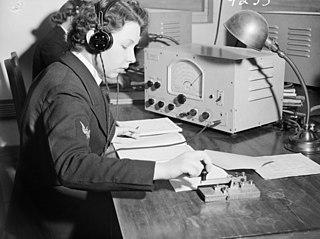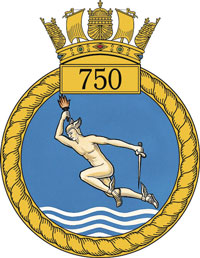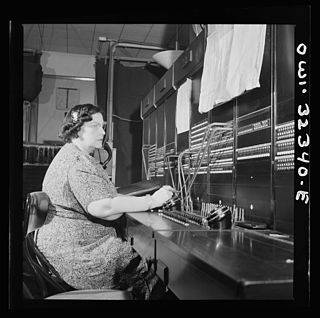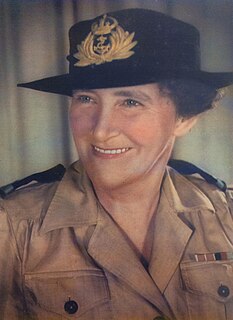
The Royal Australian Navy (RAN) is the principal naval force of Australia, a part of the Australian Defence Force (ADF) along with the Australian Army and Royal Australian Air Force. The Navy is commanded by the Chief of Navy (CN), who is subordinate to the Chief of the Defence Force (CDF) who commands the ADF; the current CN is Vice Admiral Michael Noonan. The CN is also directly responsible to the Minister of Defence, with the Department of Defence administering the ADF and the Navy.
An officer candidate school (OCS) is a military school which trains civilians and enlisted personnel in order for them to gain a commission as officers in the armed forces of a country. How OCS is run differs between countries and services. Typically, officer candidates have already attained post-secondary education, and sometimes a Bachelor's degree, and undergo a short duration of training which focuses primarily on military skills and leadership. This is in contrast with a military academy which includes academic instruction leading to a bachelor's degree.

The Women's Royal Naval Service was the women's branch of the United Kingdom's Royal Navy. First formed in 1917 for the First World War, it was disbanded in 1919, then revived in 1939 at the beginning of the Second World War, remaining active until integrated into the Royal Navy in 1993. WRNS included cooks, clerks, wireless telegraphists, radar plotters, weapons analysts, range assessors, electricians and air mechanics.

The United States Naval Reserve , better known as the WAVES, was the women's branch of the United States Naval Reserve during World War II. It was established on July 21, 1942 by the U.S. Congress and signed into law by President Franklin D. Roosevelt on July 30. This authorized the U.S. Navy to accept women into the Naval Reserve as commissioned officers and at the enlisted level, effective for the duration of the war plus six months. The purpose of the law was to release officers and men for sea duty and replace them with women in shore establishments. Mildred H. McAfee, on leave as president of Wellesley College, became the first director of the WAVES. She was commissioned a lieutenant commander on August 3, 1942, and later promoted to commander and then to captain.

Hector Macdonald Laws Waller, was a senior officer in the Royal Australian Navy (RAN). His career spanned almost thirty years, including service in both world wars. At the helm of the flotilla leader HMAS Stuart in the Mediterranean from 1939 to 1941, he won recognition as a skilful ship's captain and flotilla commander. He then transferred to the South West Pacific as captain of the light cruiser HMAS Perth, and went down with his ship during the Battle of Sunda Strait in early 1942.

The Women's Royal Australian Naval Service (WRANS) was the women's branch of the Royal Australian Navy (RAN). In 1941, fourteen members of the civilian Women's Emergency Signalling Corps (WESC) were recruited for wireless telegraphy work at the Royal Australian Navy Wireless/Transmitting Station Canberra, as part of a trial to free up men for service aboard ships. Although the RAN and the Australian government were initially reluctant to support the idea, the demand for seagoing personnel imposed by the Pacific War saw the WRANS formally established as a women's auxiliary service in 1942. The surge in recruitment led to the development of an internal officer corps. Over the course of World War II, over 3,000 women served in the WRANS.

The Women's Auxiliary Australian Air Force (WAAAF) was formed in March 1941, after considerable lobbying by women keen to serve and by the Chief of the Air Staff, who wanted to release male personnel serving in Australia for service overseas. The WAAAF was the first and largest of the wartime Australian women's services. It was disbanded in December 1947.

The Royal Navy Observer School grew out of HM Naval Seaplane Training School at RNAS Lee-on-Solent as a result of a series of changes of identity and parent unit. From 1918 until 1939 the Royal Air Force was responsible for naval aviation, including training and provision of aircrew to the Royal Navy. With the return of naval aviation to the Royal Navy on 24 May 1939, the Observer School was established as 750 Naval Air Squadron of the Fleet Air Arm. During World War II the squadron moved to Trinidad to continue training aircrew. It was temporarily disbanded in October 1945. The squadron reformed in 1952 and is currently based at RNAS Culdrose, where it trains approximately 30 Royal Navy observers every year.

During World War II the Royal Australian Navy (RAN) formed beach commando units to go ashore with the first wave of amphibious assaults. They would conduct local reconnaissance, signpost the beaches, control boat traffic, and communicate with the maritime forces. These were known as Royal Australian Navy Beach Commandos. They took part in the Borneo campaign.

Women currently make up 19.2% of the ADF workforce. Women have served in Australian armed forces since 1899. Until World War II women were restricted to the Australian Army Nursing Service. This role expanded in 1941–42 when the Royal Australian Navy (RAN), Australian Army and Royal Australian Air Force established female branches in which women took on a range of support roles. While these organisations were disbanded at the end of the war, they were reestablished in 1950 as part of the military's permanent structure. Women were integrated into the services during the late 1970s and early 1980s, but were not allowed to apply for combat roles. In January 2013, serving women were allowed to apply for all positions in the Australian Defence Force (ADF) except special forces which became open to women in January 2014. In January 2016, civilian women became able to direct entry to all positions.

Florence Violet McKenzie OBE, affectionately known as "Mrs Mac", was Australia's first female electrical engineer, founder of the Women's Emergency Signalling Corps (WESC) and lifelong promoter for technical education for women. She campaigned successfully to have some of her female trainees accepted into the all-male Navy, thereby originating the Women's Royal Australian Naval Service (WRANS). Some 12,000 servicemen passed through her signal instruction school in Sydney, acquiring skill in Morse code and visual signalling.

Women in telegraphy have been evident since the 1840s. The introduction of practical systems of telegraphy in the 1840s led to the creation of a new occupational category, the telegrapher, telegraphist or telegraph operator. Duties of the telegrapher included sending and receiving telegraphic messages, known as telegrams, using a variety of signaling systems, and routing of trains for the railroads. While telegraphy is often viewed as a males-only occupation, women were also employed as telegraph operators from its earliest days. Telegraphy was one of the first communications technology occupations open to women.
The King's Birthday Honours 1942 were appointments by King George VI to various orders and honours to reward and highlight good works by members of the British Empire. They were published on 5 June 1942 for the United Kingdom and Canada.
The 1944 King's Birthday Honours, celebrating the official birthday of King George VI, were announced on 2 June 1944 for the United Kingdom and British Empire, New Zealand, and South Africa.
The King's Birthday Honours 1943 were appointments by King George VI to various orders and honours to reward and highlight good works by people of the British Empire. They were published on 2 June 1943 for the United Kingdom and Canada.

Australian women during World War II played a larger role than they had during World War I.
The 1953 New Year Honours in New Zealand were appointments by Queen Elizabeth II on the advice of the New Zealand government to various orders and honours to reward and highlight good works by New Zealanders. The awards celebrated the passing of 1952 and the beginning of 1953, and were announced on 1 January 1953.
The 1959 New Year Honours in New Zealand were appointments by Elizabeth II on the advice of the New Zealand government to various orders and honours to reward and highlight good works by New Zealanders. The awards celebrated the passing of 1958 and the beginning of 1959, and were announced on 1 January 1959.

Ruby Boye, was an Australian coastwatcher on the island of Vanikoro in the South Pacific Area during the Second World War. She was Australia's only female coastwatcher.
Joan Streeter, was an Australian naval officer.














